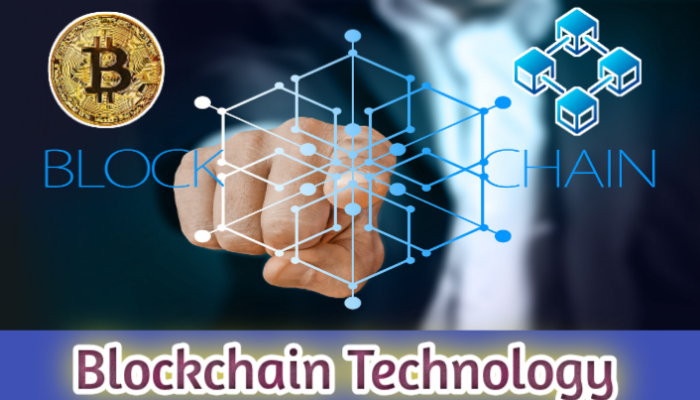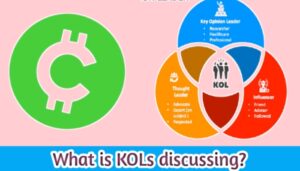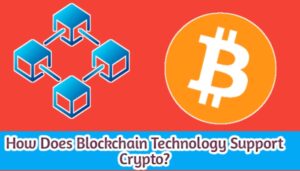We are living in the age of digital transformation, where every industry is moving towards modernization. From banking and healthcare to e-commerce and government services, everything is shifting online. In this era of rapid digital change, blockchain technology has emerged as one of the most revolutionary innovations.
1. Blockchain Matters in World
Blockchain is not just about cryptocurrency. It is a powerful technology that enables secure, transparent, and decentralized systems where there is no need for a third-party authority. This makes processes faster, more cost-efficient, and more reliable.
In simple terms, blockchain is a digital ledger where transactions are recorded in blocks and linked together in chronological order, forming a chain. It is decentralized, secure, and tamper-proof.
2. Understanding the Basics of Blockchain
2.1 What is Blockchain in Simple Terms?
Blockchain is a distributed database or network that stores information in blocks. These blocks are connected in a chain-like structure, and each block contains a cryptographic link to the previous block, making it extremely difficult to alter.
2.2 Core Principles of Blockchain Technology
- Decentralization – No central authority controls the data.
- Transparency – Transactions are visible and verifiable by all participants.
- Immutability – Once data is recorded, it cannot be changed.
- Security – Cryptography ensures strong protection against fraud and hacking.
2.3 History & Evolution of Blockchain
- 1991 – Concept of blockchain introduced by cryptographers.
- 2008 – Satoshi Nakamoto created Bitcoin and introduced blockchain as a practical system.
- Today – Blockchain is being used in supply chains, healthcare, banking, real estate, and many more industries.
2.4 Blockchain vs Traditional Databases
| Feature | Blockchain | Traditional Database |
|---|---|---|
| Control | Decentralized | Centralized |
| Security | Very High | Moderate |
| Transparency | Open and Verifiable | Limited |
| Data Change | Immutable | Editable |
| Trust | Peer-to-Peer | Third-Party Required |
3. How Does Blockchain Work?
3.1 The Concept of Blocks
Every block contains three main things: transaction data, a unique cryptographic hash, and a link to the previous block. This makes the chain tamper-proof.
3.2 The Role of Nodes and Networks
Nodes are computers connected to the blockchain network. They validate, verify, and store transactions, ensuring decentralization and trust.
3.3 Cryptography in Blockchain
Blockchain uses public and private keys for encryption. This ensures that only the rightful owner can access or authorize a transaction.
3.4 Consensus Mechanisms
- Proof of Work (PoW) – Used in Bitcoin, energy-intensive but highly secure.
- Proof of Stake (PoS) – Used in Ethereum 2.0, energy-efficient alternative.
- Proof of Authority (PoA) – Relies on trusted validators instead of mining.
3.5 The Process of Adding a New Transaction
- A user requests a transaction.
- The request is broadcasted to all nodes.
- Nodes verify the transaction using consensus mechanisms.
- The verified transaction is added to a block.
- The block is added permanently to the blockchain.
4. Features of Blockchain Technology
4.1 Decentralization Explained
Unlike traditional systems where one central authority has control, blockchain distributes power across the network.
4.2 Transparency and Trust
All participants can view transactions, which increases trust.
4.3 Immutability of Records
Once data is entered, it cannot be erased or modified.
4.4 Security Advantages
With strong cryptographic algorithms, blockchain is resistant to hacks and fraud.
4.5 Smart Contracts
Smart contracts are self-executing digital contracts that run automatically when predefined conditions are met.
5. Types of Blockchain
5.1 Public Blockchain
- Open for everyone
- Example: Bitcoin, Ethereum
5.2 Private Blockchain
- Controlled by a single organization
- Example: Hyperledger
5.3 Consortium Blockchain
- Semi-decentralized, managed by multiple organizations
- Example: R3, Energy Web Foundation
5.4 Hybrid Blockchain
- Combination of public and private features
- Example: IBM Food Trust
6. Benefits of Blockchain Technology
6.1 Efficiency and Speed
Transactions are faster since intermediaries are eliminated.
6.2 Reduced Costs
No need for banks, brokers, or third parties → lower costs.
6.3 Increased Security
The system is tamper-proof and highly secure.
6.4 Enhanced Traceability
In supply chains, the origin and journey of a product can be traced.
6.5 Global Accessibility
Anyone with an internet connection can access blockchain services worldwide.
7. Real-World Applications of Blockchain
7.1 Cryptocurrency and Digital Payments
The most popular application, including Bitcoin, Ethereum, and stablecoins.
7.2 Supply Chain Management
Companies like Walmart and IBM use blockchain to track food supply.
7.3 Healthcare Records and Data Security
Securely stores and shares patient records.
7.4 Banking and Financial Services
Cross-border payments, fraud detection, and faster settlements.
7.5 Real Estate Transactions
Smart contracts make property transactions faster and fraud-free.
7.6 Voting Systems and Governance
Blockchain voting ensures fair, secure, and transparent elections.
7.7 Intellectual Property and Digital Identity
NFTs and decentralized identities (DIDs) protect ownership and authenticity.
8. Challenges and Limitations of Blockchain
8.1 Scalability Issues
Handling large-scale transactions can be slow and inefficient.
8.2 High Energy Consumption
Mining consumes a lot of electricity, especially in Bitcoin.
8.3 Legal and Regulatory Challenges
Governments are still developing policies for blockchain regulation.
8.4 Privacy Concerns
Public blockchains expose transaction data to everyone.
8.5 Adoption Barriers
Not all businesses are ready to adopt blockchain due to cost and complexity.
9. Future of Blockchain Technology
9.1 Blockchain and Web 3.0
Blockchain is the backbone of Web 3.0, the next decentralized internet.
9.2 Blockchain in Artificial Intelligence and IoT
Integration with AI and IoT will make devices smarter and more secure.
9.3 Government and Enterprise Adoption
Countries like Estonia and Dubai are already using blockchain for governance.
9.4 Predictions for the Next Decade
- Wider adoption of digital currencies
- Growth of decentralized finance (DeFi)
- Everyday blockchain use in normal life
10. Blockchain Myths vs. Facts
10.1 Common Misconceptions
- Myth: Blockchain = Bitcoin only
- Myth: Blockchain is 100% secure
10.2 The Truth Behind Blockchain Hype
Blockchain is powerful but not a solution for everything. It works best when used in the right industry and scenario.
11. Conclusion
11.1 Recap of Key Points
Blockchain is a digital ledger that is decentralized, secure, transparent, and immutable.
11.2 Why Blockchain is Here to Stay
With industries already adopting it, blockchain is shaping the future of finance, governance, and technology.
11.3 Final Thoughts for Businesses & Individuals
Blockchain is not just a trend a foundation for the future digital world. Businesses and individuals should start understanding and preparing for it.

















